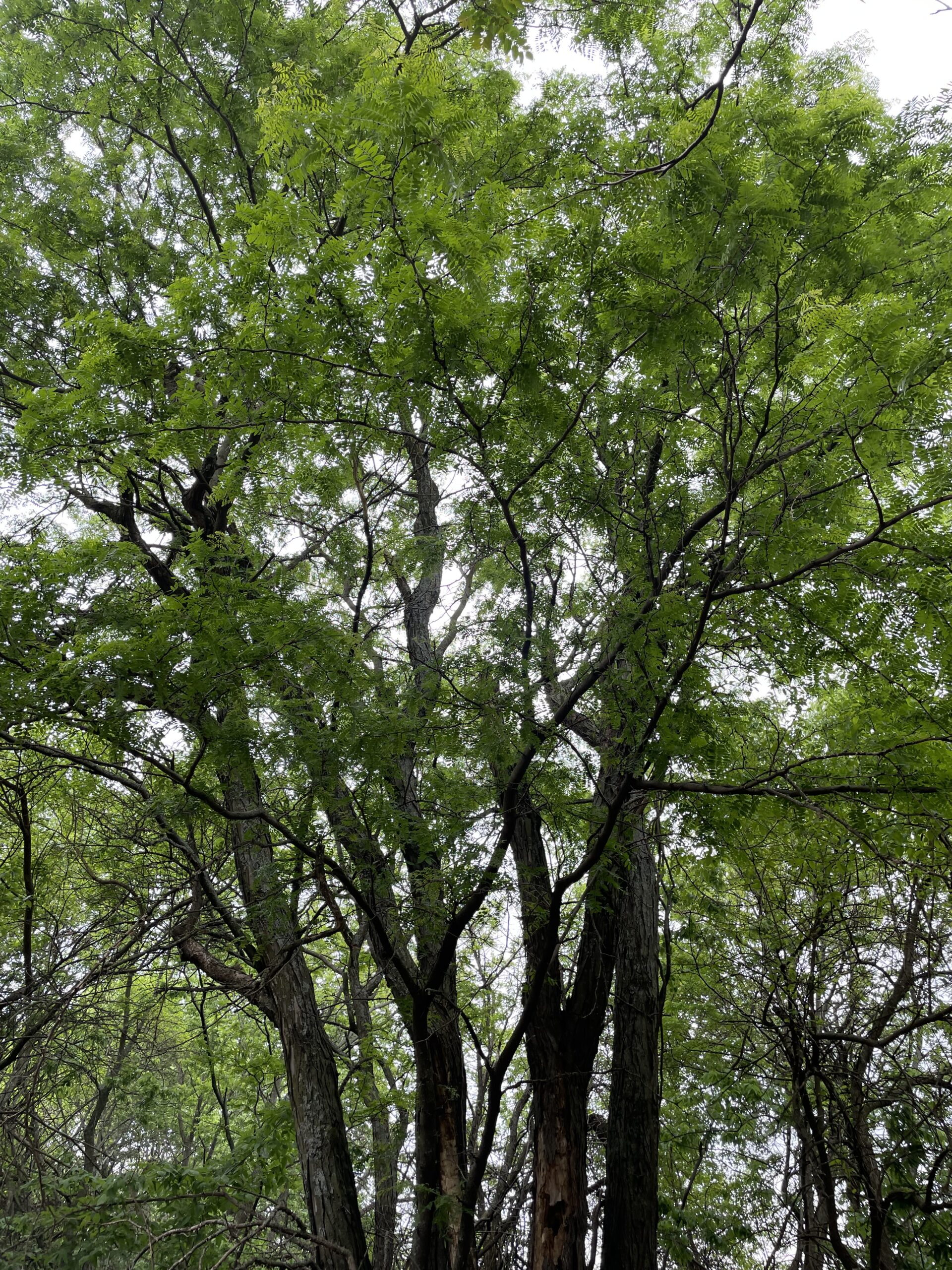Honey Locust
Gleditsia triacanthos
This tree may not be as sweet as the name implies! The species comes with lots of really impressive, and painful thorns! The name “triacanthos” literally means “three thorns” because the thorns appear in groups of three. The reference to honey is for the thick substance found in the pods the tree produces, which is sweet and tasty, like honey.1 In fact, Native Americans and pioneers used the pulp of the seed pods raw as a sweetener2. The thorns were used as equivalents of our thumbtacks and pins. The tree produces a strong wood that generally resists rot and decay. The larger branches were good for making fence posts and furniture. The smaller branches were useful for making bows.3
Honey Locus has proven valuable for the wood it produces and the food it provides for wildlife and human consumption. Bean pods are eaten by white-tailed deer, squirrels, rabbits, hogs, opossums, and raccoons. Deer consume the young shoots in spring and bark of young trees in the winter. Butterflies, bees, and moths consume the nectar from the flowers.4
This tree is not recommended for yard landscapes because of its thorns and seed pods. It can spread quickly and become a problem in some pasture areas to the point of being considered invasive. Mowing or cutting increases sprouts, so to be removed the tree needs to be dug up.
- North Carolina Extension Gardener Plant Toolbox – Gleditsia triacanthos ↩︎
- Lady Bird Johnson Wildflower center Plant Database – Gleditsia triacanthos ↩︎
- North Carolina Extension Gardener Plant Toolbox – Gleditsia triacanthos ↩︎
- North Carolina Extension Gardener Plant Toolbox – Gleditsia triacanthos ↩︎


